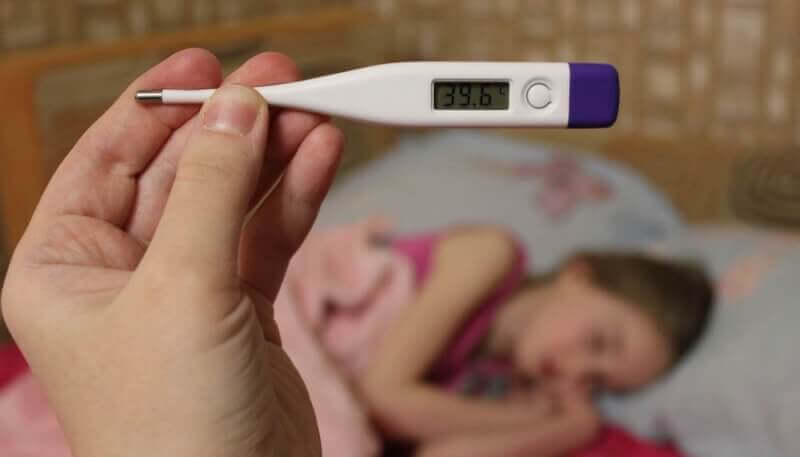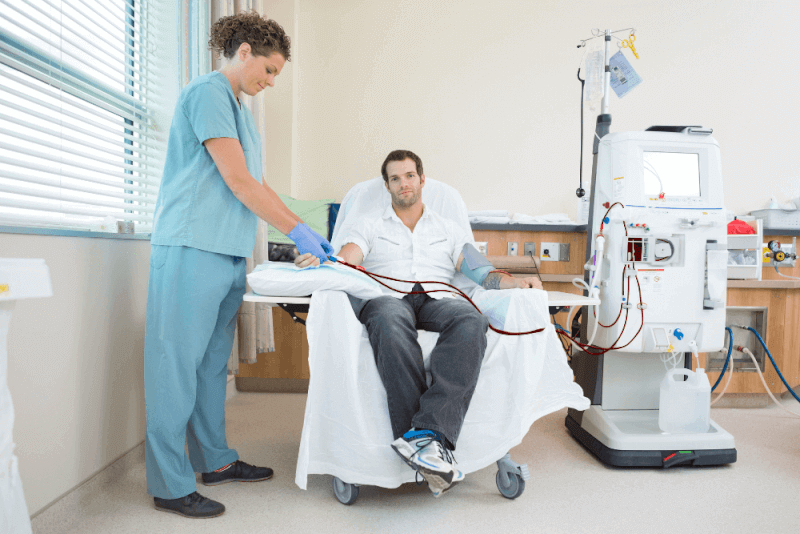Familial Mediterranean fever, one of the diseases observed in countries bordering the Mediterranean, is also a genetically transmitted disease. Familial Mediterranean Fever is also known as FMF and is especially seen in North Africans, Jews, Armenians, Arabs, and Turks.
What is Familial Mediterranean Fever?
Familial Mediterranean fever, which occurs as a result of a mutation in a gene called Pyrin, is also a hereditary disease. If both the mother and the father carry this gene, then their children have the disease. However, if one of the parents has the familial Mediterranean fever gene, then the child will be a carrier.
The most characteristic symptoms of Familial Mediterranean Fever, which has similar symptoms to acute appendicitis, are recurrent attacks lasting about three days. The attacks of Familial Mediterranean Fever are caused by inflammation of the peritoneum. Therefore, patients experience chest pain, abdominal pain, joint pains, fever, and a feeling of stabbing in the chest.
In some patients, redness is observed on the front parts of their legs. Even if the symptoms of Familial Mediterranean Fever are not treated, they disappear on their own within 3-4 days. On the other hand, due to the constant recurrence of attacks, there is a protein accumulation in the patients' bodies. This protein usually accumulates in the kidneys. Although rarely seen, some patients also experience protein accumulation in their cell walls. If the protein accumulates in the cell wall, a condition called vasculitis may occur.
Causes of Familial Mediterranean Fever
The only known cause of Familial Mediterranean Fever is genetic. The disease, which is passed down through recessive genes, has been observed in 10,000 patients worldwide. However, the cause of the physiological attacks associated with the disease is unknown.
Symptoms of Familial Mediterranean Fever
The first symptoms of the disease are seen in childhood. Patients are not constantly in a state of illness. Instead, there are periods of attacks and periods of health. The frequency of attacks experienced by Familial Mediterranean Fever patients varies from person to person. However, patients live completely healthy lives during periods when the disease is not in an attack phase.
The disease usually shows its first symptoms before the age of 20. Familial Mediterranean Fever attacks usually last between 12 hours and 3 days. However, articular attacks characterized by joint involvement can last for weeks or months. The reason why Familial Mediterranean Fever attacks are triggered is unknown. Studies suggest that infections and stress may be factors. The attacks seen in childhood are more severe compared to those in adulthood. Therefore, the daily lives of child patients are significantly affected. The symptoms of the disease include the following.
- Recurrent fever,
- Pain,
- Inflammation of the membranes in the body (pleura, pericardium, peritoneum)
- Skin manifestations,
- Muscle pains,
- Increase in inflammation markers in the blood,
- Swelling and tenderness in the scrotum,
- Red rashes below the knees and on the feet,
- Joint inflammation,
- Fever above 38 degrees Celsius,
- Severe abdominal pain,
How is Familial Mediterranean Fever Diagnosed?
Blood tests are used in the diagnosis of Familial Mediterranean Fever, but the symptoms of the disease are not always detected in blood values. Therefore, the distinguishing feature of the disease is the recurring increase in infection markers in the blood. Genetic tests are also not sufficient for a definitive diagnosis of the disease. Patients are usually diagnosed after cycles of attacks and normal periods.
Treatment of Familial Mediterranean Fever
The treatment of Familial Mediterranean Fever is planned both to control attacks and to prevent the development of amyloidosis. The only drug that can achieve this goal is colchicine. Colchicine is in tablet form and helps both prevent attacks and reduce inflammation in the body. Patients who regularly continue colchicine treatment experience a reduction in the number and severity of attacks. On the other hand, the main goal of this drug treatment is not to reduce attacks but to prevent the development of amyloidosis. In this regard, the drug is 100% successful. With the use of the drug, attacks disappear in half of the patients, while suppression is achieved in 30% to 40% of the patients. In 10% of the patients, attacks cannot be controlled. For the drug treatment to be successful, patients need to continue their treatment regularly and throughout their lives.
The most common side effects of colchicine, used in the treatment of Familial Mediterranean Fever, include diarrhea, abdominal cramps, nausea, and bloating. These side effects of the drug appear only when used in high doses. If arthritis is added to the disease picture, arthritis treatment should also be added to the treatment of Familial Mediterranean Fever. The nonsteroidal anti-inflammatory drug group is used in arthritis treatment.









